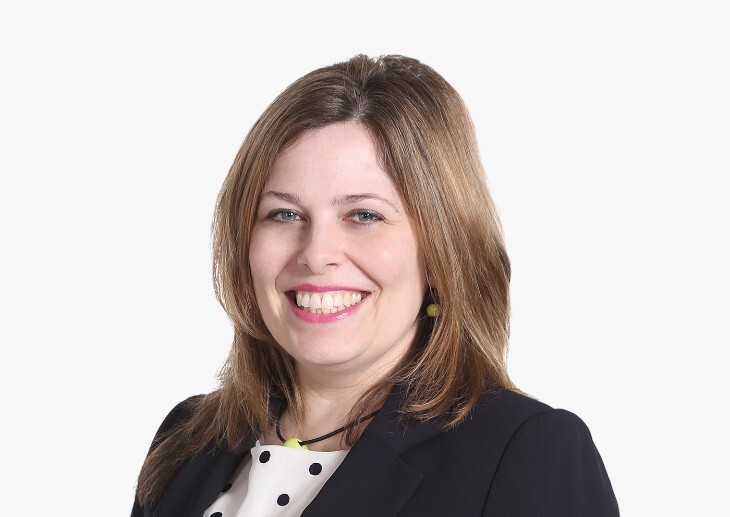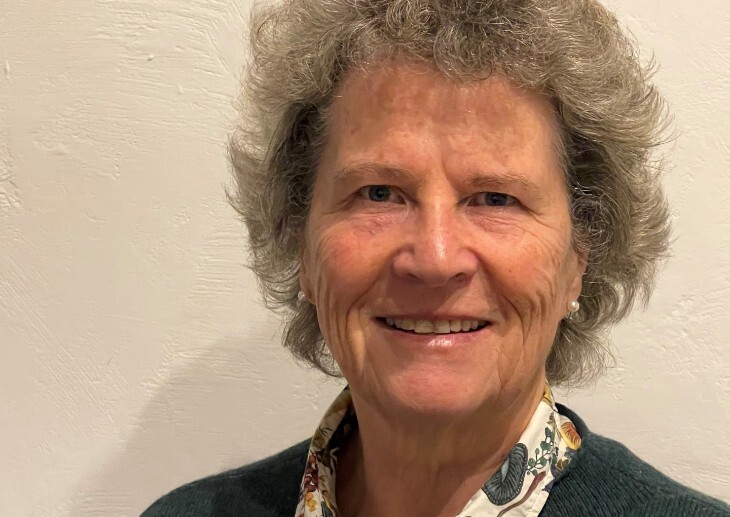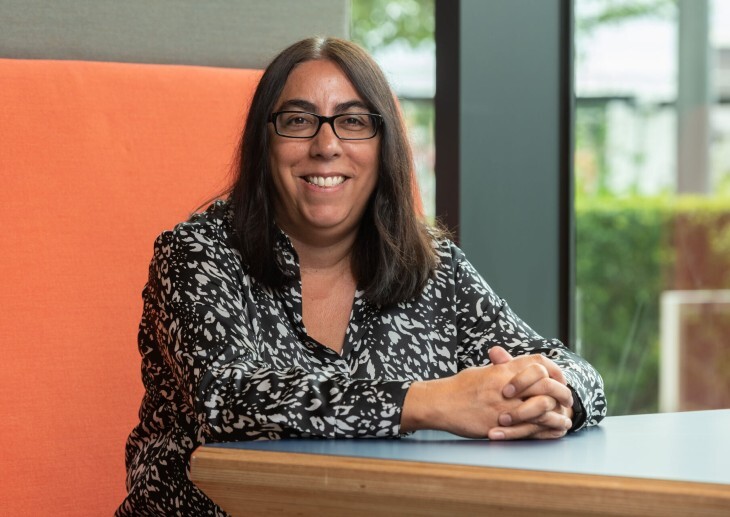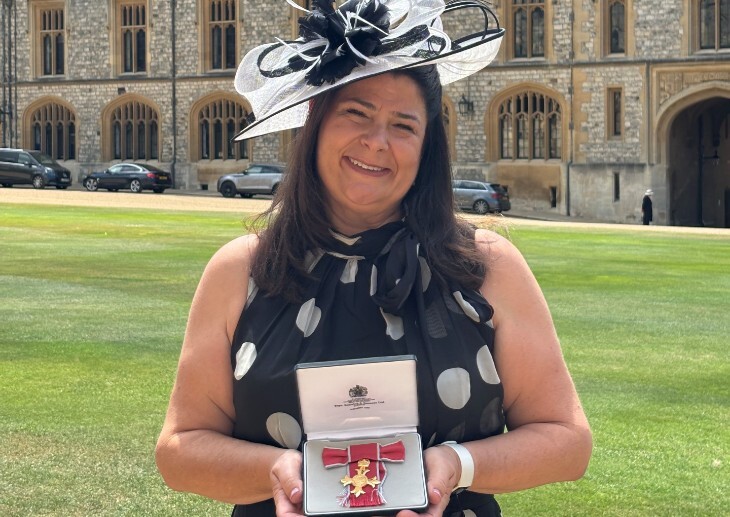NHS Humber and North Yorkshire is a large health system in the North East of England, covering 1.7 million people including the cities of Hull and York and a long stretch of coastline. Chief executive Professor Stephen Eames discusses the current position and future hopes for his ICB in an interview with Healthcare Leader’s editor Victoria Vaughan.
Victoria Vaughan: Can you give an overview of your ICB?
Stephen Eames: Humber and North Yorkshire Integrated Care System (ICS) is made up of 28 organisations including six local authorities and NHS acute and mental health trusts. We’ve got 162 general practices and 59 PCNs and we’ve got around 60 community interest companies or social enterprises which are a key partner in our particular ICS, which I think is a little unique. I think geographically we’re something like the third largest ICS in England. Our budget is around about £3.3bn and we employ 40,000 people, many of whom are working in those partner organisations, and then we’re serving a population of roughly 1.7 million.
One characteristic that is really important is that a lot of our community are in coastal towns because we basically back onto the North Sea. All the way down from Whitby right through to Skegness and Cleethorpes. The reason I raise that is Chris Whitty, last year, published a specific report about the impact of health inequalities and other inequalities, poverty and so on, in those communities. We’re not the only place with coastal communities but that’s a particular thing that we are focused on as part of our wider health inequality and wider agenda in that context. And that’s further exacerbated with where we are now with the cost-of-living crisis and all that’s happening with the economy, so that’s a particular feature.
The other interesting this is partly our operating model. We’ve got six places that are all local authority boundaries. The ICS has an NHS place-based director but we also have a place-based chief executive lead. And in all of our six places that chief executive lead is the local authority chief, which I think is slightly unusual.
The other thing on a local government front is that in North Yorkshire and York, there’s a big devolution going on that’s going live next April. So that gives us some opportunities around aligning what the ICS is doing with that big change that’s going on there.
The other things that I think are features of our ICS, if you were to look at the average life span for men and women, if you looked at the ICS as a whole for our population, we don’t look that far off the average. However, in some of those coastal communities and in places like inner city Hull, parts of Scunthorpe and Grimsby, there’s a 15-year gap, 10-year gap, in some of those communities for men and women against that average. So there is a big inequalities challenge wrapped up in all of that. People say, ‘Well, what’s the ICS for?’ It’s for lots of things but my North Star would be, if we’re for anything, can we actually make a difference to that gap? It’s not an overnight sensation to address that but we do know that the incidence of heart disease, the prevalence of smoking, the impact of premature birth, teenage pregnancy, whatever indicator you want to look at, the rates are higher in those communities. There’s so much stuff going on in ICSs and so many demands but for me that what I keep in mind.
VV: You’ve got your north star but what are the top three areas of immediate focus?
SE: Number one on my agenda has to be that issue about trying to improve on our inequalities agenda. For example, we’re investing an awful lot more now into tobacco reduction policies and so on because it’s our biggest killer. Number two, clearly, we’ve got a massive agenda around recovery and I would say if you’re thinking about the very short-term, linked to that is this whole winter. The third one is workforce and for us, there’s a particular challenge because we don’t do as well as some of the other ICSs in our region because we’re a bit out on a limb. Hull’s a bit out on a limb. These coastal communities are a bit out on a limb, so recruitment is challenging and also retaining people is challenging. And not only that, in order to address some of those shorter-term winter challenges, waiting lists and so on, we’re trying to recruit people in so we’ve got additional capacity. Unless we can get that additional capacity, we can’t deliver our plans and if you look slightly longer-term on workforce in primary care, one of the issues, and it’s not just exclusive to those coastal communities, it’s in other parts of our patch, we can’t recruit GPs and we’re not going to in the foreseeable future. We’re having to think about how relatively immature PCNs can offer support and those more mature federations can do something around extending their resources to support these communities but the truth is, we’re going to have to look at a very different model. In essence, some of the things that GPs might traditionally do, other professionals are going to have to do in these places.
We’re applying sticking plaster at the moment by bringing practices together so at least we can get a bit of a critical mass but that’s not the answer and we’re never really going to get around the shortages around general practitioners not only on the ground but in training, we’re not training enough yet.
There’s a short terms agenda there about what do we do about different ways of working without existing workforce, and how can we use where we’ve got strong general practice to try and find ways of supporting.
In the city of York it’s a well-established group of GPs and practices, and they’ve got some capability, and they’re organised in to something called Nimbus which is effectively a federation, but they can provide some services, in to Scarborough, for example. That’s helping, but that’s not going to be the answer in the longer term.
The other big workforce challenge, that everybody has up and down England, is all about the domiciliary care market in social care, it’s decimated in some of our areas, so what we’re having to do these is recruiting band 2/band 3 healthcare assistants on to NHS contracts and then seconding them out to try and get that domiciliary care service shored up. The point I’m making is that we’re doing all of these things and we’re trying to scale them up, but it’s so fragile, so unless you can fix some of that, that’s why it’s our biggest priority, because some of those other aspirations really fall of the edge of a cliff if you can’t solve that.
VV: Ultimately your saying people will be served by people who aren’t GPs for things that maybe would’ve expected to see a GP about?
SE: That’s going to have to be scaled up, you have pharmacies, that’s already happening of course, but even pharmacies, the current crisis is knocking a lot of small pharmacy businesses out of business, isn’t it? It’s not straightforward. But yes, I do think that the sort of model that we are probably going to have in place is like Bridlington, a small seaside town that’s only got five practices going down to two. We’re going to have to have other professionals being directed and supervised perhaps by general practitioners, and you can use technology, can’t you? There are all these things that we can do. It’s not as if it’s new good practices distribute their work to nurses and so on, but I think there’s going to be much more of that. And of course, some of the plan from Fuller is about the primary care and GP Assistants. A mixture of things are needed.
ICB breakdown
Chair: Sue Symington
CEO: Stephen Eames CBE
Primary care lead: Julie Warren, Director of Primary Care and Assurance
Sustainability lead: Jane Hazelgrave, Executive Director of Finance
Health inequalities and population health lead: Jack Lewis, Consultant in Public Health
ICB population: 1.7 million
Budget: £3.3bn
No of GP practices: 191 Practices
Places: East Riding of Yorkshire, Hull, North East Lincolnshire, North Lincolnshire, North Yorkshire, York
VV: In terms of your domiciliary market being decimated, is that because it’s being beaten by wage offers from supermarkets or is it that you’ve not got the overseas staff because of Brexit? What’s decimated it?
SE: You’ve put your finger on two of the issues there. Local Amazon, over in Humber near Hull, they’re paying gold and handshakes, £500, ‘Come and work for us,’ and they’re paying something like £15 an hour, whereas the minimum wage as it was last year was only £10 an hour. The government is now looking to open up immigration again, and I think that’s pretty vital in the short term. I’m involved with some colleagues nationally from NHS England, with a ministerial team and management from the Indian State of Kerala. That project is all about channeling your workforce, both professional and non-professional from that state. Now that’s being supported by the Department of Health, but there’s got to be an awful lot more of that and there’s got to be something done about the caps that are on training places, particularly for clinical staff and nurses. Longer-term without those things, it’s hard to see how some of the big ambitions around inequalities, recovery and so on can be realised.
VV: What’s your relationship like with primary care?
SE: The political vogue at the moment is the two week issue – you must have an appointment within two weeks. In fact we are seeing more patients, despite all these difficulties, than we did last year, and 84% of our patients are seen within two weeks, so just to be clear, that’s the situation. Of course that’s not really the biggest issue, even though it’s the biggest issue in the government’s mind.
At one level we’ve got a mixture of traditional practice because in parts of North Yorkshire, places like York, people want to come and work in these places, so we’ve got a strong core in large chunks of our geography, but as we’ve already said, in those coastal communities, inner city Hull, we don’t. It’s a much more difficult challenge.
We do have a retirement bulge in York to be concerned about. We’re clear that working with PCNs and with primary care that is not GPs, primary care more generally, we have to find a new model of delivery for the reasons we’ve already outlined. We’ve got a pretty good relationship with the PCNs, and with the local medical committees here. There are two, one in the Humber, and one in North Yorkshire and York, and we’re working really closely with them. Myself and the ICB chair, Susan Symington, meet regularly with that leadership.
There’s obviously a lot of doom and gloom about because of the pressures and so on that people are under, but it’s quite interesting as although the PCNs are immature in their development [having been formed in 2019] actually they’re a real beacon of innovation and ideas. What we’re trying to do is harness some of that innovation and scale it up? I think PCNs are a real key to the future.
Part of the plan around systems is collaboratives. We have a primary care collaboratives and we’ve got a joint leadership there from two fantastic GP colleagues, the plan is, and it’s not fully cooked yet, but we want to be giving the resources that we have for primary care ultimately to that collaborative to lead and direct. Now, we’re not in a position to do that fully yet, we’re going to start to move down that route from next April, and that approach has gained a lot of momentum and support from our primary care community. The overriding vision for our service, it’s driven by, our north star of prevention as much as possible out of hospital, supported by technology, building back from neighbourhoods, and from PCNs, so we are actually investing an awful lot in trying to get to that position. That said, primary care is overwhelmed in every area because of the here and now, so it’s not an easy road.
VV: How do you make sure you are investing in primary care so that trusts are not the main drain on resources? How do you make sure that you’re hearing that often disparate voice from primary care which has lots of different aspects to it and ways of working?
SE: Well, I used to be one of them, so that’s helpful. I don’t think any of the complex challenges we can deliver unless we work as systems. Even before systems any route towards improvement and success comes from people working together, frankly.
But my first answer to your question is leg work, you have to get to know your leaders in primary care, and you have to go out there and you have to be physically present. The second thing you have to do is advocate exactly what you’ve just said, that is our direction of travel, our strategy is a life course strategy, start life well, live well, age well, end life well.
A lot of that is about driving the emphasis away from the acute setting to other settings. And anyway, the current model is broken so we have to change that. The second thing is articulating that strategy all along. I think the third thing is, in my experience you’ve got to be very careful it doesn’t become a source of tension with primary care on the one hand saying, ‘All those awful people in the acute hospital.’ And the acute hospital saying, ‘Oh, those awful people in community service and primary care, don’t do anything all day.’ So I think a lot of this is how you bring those two sectors together, which place based integrated arrangement does. Going back to the collaboratives, we’ve got five and I’ve purposely set them up as sector based. We’ve got an acute one, a mental health one, a primary care one, a voluntary sector one, and quite unusually a community and care one which involves local government – directors of adult services.
People are worried about that approach because they say, ‘Well, you might silo things.’ Yes, you have to be aware of that, but the way that I work that agenda is each of those collaboratives has a Chief Exec, or in the primary care collaborative a senior general practitioner clinical leader. And we come together very regularly as well so there’s a number of ways in which you can defend against [silos]. But the acid test in the end is where you put your money.
The other thing we have to do is probably invest differentially in those areas of greatest need, so if I come back to the coastal community issue, or inner city Hull, as opposed to the leafy suburbs of York, that equally applies in how we organise the invest in primary care, or in any other service, not easy.
VV: How helpful is the ICB framework for working with practices and PCNs?
SE: We were doing some of it already, but it’s generally helpful to the cause that we’re talking about. The other thing, this is not happening yet in the way that I’d want to see it. If you take a place for the sake of the argument like North Lincolnshire which is quite a small community and a small population base, but then we’ve got some big providers like big acute providers, a big mental health provider.
There are a whole bunch of people who work in the mental health trust at the moment who are working at the more day-to-day routine end of mental health. What’s the biggest challenge for GPs in North Lincolnshire? It’s probably true across the whole ICS, one of the biggest challenges is the impact on mental health and the impact on families.
So, back to your point about where do you deploy your GP time? We want our GPs focused on population health, prevention, all that sort of territory. The only way you can really start to do that is to say to the mental health trust, ‘Your staff in North Lincolnshire, even though you’ll be employing them, we want you to act like a holding company so those staff become integrated in with the broader workforce in that place.’ And you start to think about mental health practitioners in primary care alleviating that burden. Now, you can apply that to some other big-hitting areas like care of the elderly, heart disease, and so on. I know some of that is already happening but I think you’ve got to really scale that up, and it means that the big organisations have got to put some of their people and resources behind those integrated teams at place which we’re building around the PCNs fundamentally. Because I think unless you do that, you might get some benefits from that framework and that guidance.
VV: How big is the ICB deficit and how are you looking to tackle that?
SE: At the moment, on the forecast for this year, we’ve got about a £5million deficit, which I don’t think is going to be a problem. I think we’ll meet our financial target. But the bigger issue, which I would suggest is for every ICS, is that we’re making the books balance on non-recurrent elements. The real issue is, we are facing an underlying deficit challenge. One of things we absolutely need to understand before we get to March next year, is the nature of the financial challenge over the next three years. That’s what we’re looking at the moment. So it will be alright this year, because we’ve had a lot of non-recurrent money, but we’re not necessarily going to get all of that again. And anyway, we’ve made some investments this year, that I think we’re going to have to continue next year, which at the moment are not funded. So there’s a lot to do on that.
VV: In a year’s time, what would you like to be saying you’ve achieved?
SE: Even though you cannot get to that North Star, it’s probably a 10 or 15-year ambition, I’d like to think we could display that we’re starting to make an impact in those communities with the greatest need and the greatest inequalities – that number one. Number two is reducing our waiting lists and ensuring that we’ve got good access to primary care, the things that are in the headlines now, are definitely measures of success – certainly a measure of success that we’ll be judged on politically. And three, probably most important of all, is that we’ve created a leadership community, and I mean that in the broadest sense. In primary care, we’re talking about all the PCN leaders being clear about what we’re trying to achieve and are all working together, and that we’ve made significant progress on our operating model, which is essentially those six places and those five collaboratives. And there’s clear evidence that we’ve created a strong leadership community and devolved resources for them to make decisions. If we get to those three things, I’d be happy.
ICB Trusts
- Northern Lincolnshire and Goole NHS Foundation Trust – hospital and community
- York and Scarborough Teaching Hospitals NHS Foundation Trust
- Hull University Teaching Hospitals NHS Trust
- Harrogate and District NHS Foundation Trust – hospital and community services
- South Tees Hospitals NHS Foundation Trust
- Humber Teaching NHS Foundation Trust – mental health and community services
- Tees Esk and Wear Valleys NHS Foundation Trust – mental health
- Rotherham Doncaster and South Humber NHS Foundation Trust – mental health and community services
- City Health Care Partnership – Community
- Navigo – Mental Health
ICB PCNs
East Riding of Yorkshire
- Beverley, Bridlington, Cygnet, Harthill, Holderness, River and Wolds, Yorkshire Coast and Wolds
Hull
- Hull Association of Similar Practices (HASP), Haxby, Marmot, Medicas, Modality, Symphonie, Venn
North East Lincolnshire
- Freshney Pelham Primar, Meridian Health Group, Panacea, Apollo, Genesis
North Lincolnshire
- East Care, South Care, West Care, North Care Network
North Yorkshire
- North Riding Community Health Network, Scarborough Core, Filey and Scarborough Healthier Communities Network, Hambleton North, Hambleton South, Richmondshire, Whitby, Coast and Moors, Heart of Harrogate, Knaresborough and Rural, Mowbray Square, Ripon and Masham, Selby Town, Tadcaster and Rural Selby, South Hambleton and Ryedale
York
- West, Outer and North East York, York City Centre, York East, York Medical Group, Priory Medical Group






